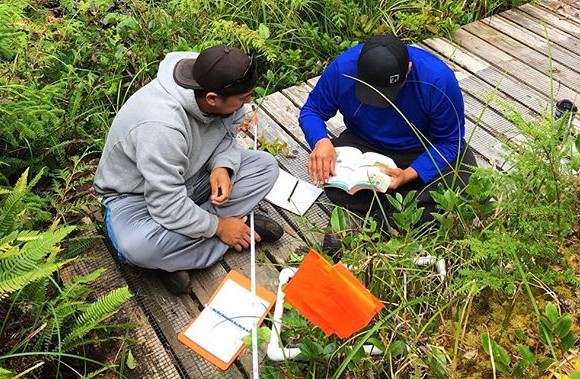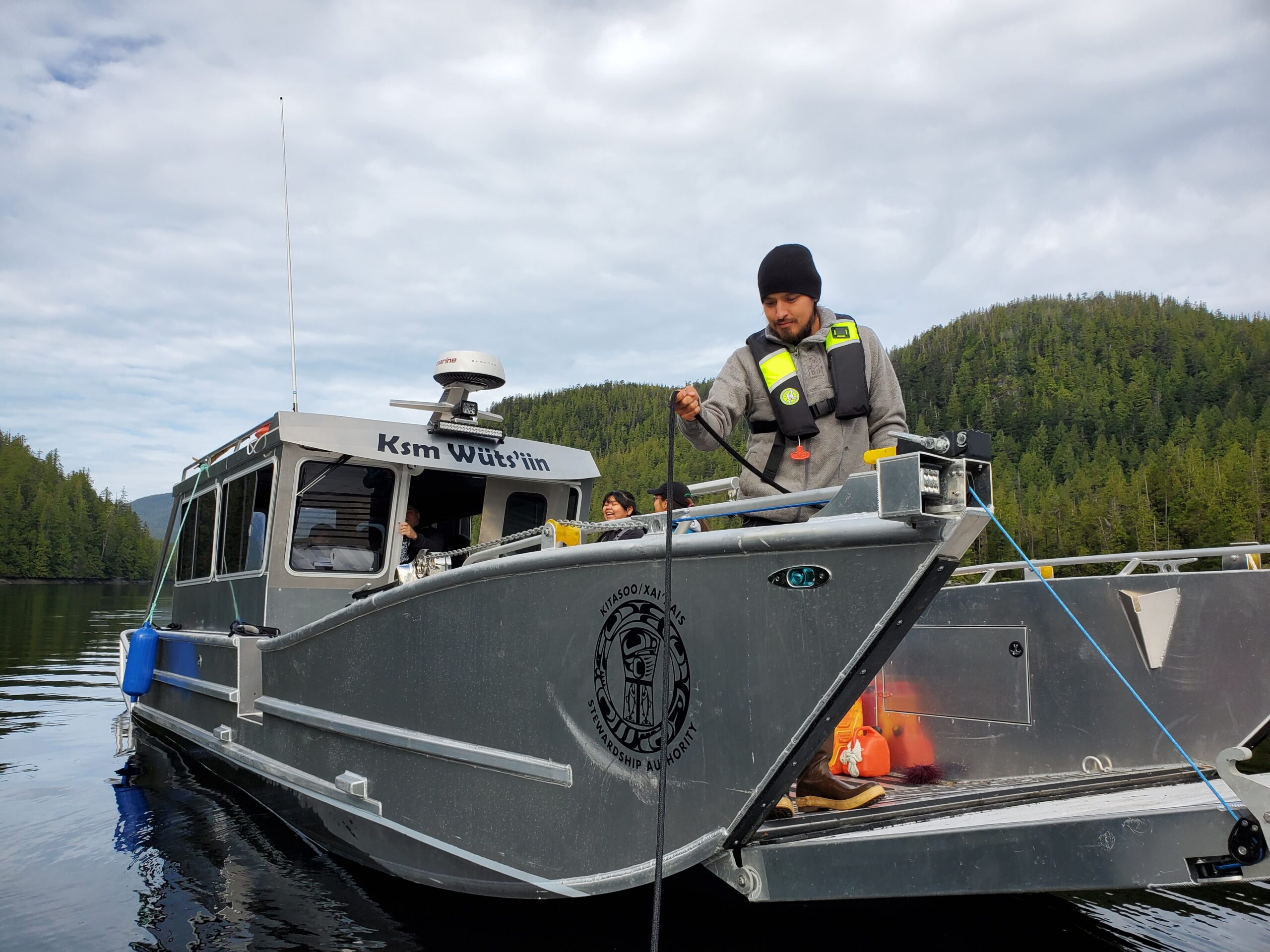In the Stewardship Technicians Training Program, students acquire the skills to become stewardship professionals and learn from traditional knowledge that’s been passed down for generations.
About 100 kilometres north of the top of Vancouver Island, students gather together before a backdrop of lush rainforest, where land and sea blend together in a mix of deep green and blue.
Ranging in age and experience, the students are all from First Nations along BC’s Central and North Coast, and Haida Gwaii, and they’re about to begin a five-day intensive course on land monitoring that will help them protect these lands and waters for future generations. It’s one of many courses of the Stewardship Technicians Training Program – a unique training program offered by Coastal First Nations, in partnership with Vancouver Island University, which provides practical skills and hands-on training in resource stewardship.
“We cover all the basic skills and techniques that help students eventually succeed as environmental technicians,” says land monitoring instructor Lora McAuley, a biologist with experience in both freshwater and marine systems. “It empowers them to take an active role in protecting their environment, and to move directly from knowledge to solutions.”
McAuley says the course she teaches is as interactive as possible, with students spending much of their time surveying plots to record and classify the plentiful and diverse plants and organisms found throughout the region. “I put a major emphasis on taking clear and useful notes in field books,” she says, “since detailed observation is the basis for everything we do as technicians.”
There’s also a classroom component, and for this course that means access to the world-class facilities of the Hakai Beach Institute – a field research station on Calvert Island, surrounded by the Hakai Lúxvbálís Conservancy, one of the province’s largest marine conservancies.
Students enrolled in the training program get to participate in several courses like this one over a two-year period, held in various locations along the coast, including Prince Rupert and both Skidegate and Masset on Haida Gwaii – with all travel, tuition and accommodations costs supported. The courses offer skills and knowledge that are essential for all stewardship professionals throughout the coast, but some of the richest learning happens between Nations.
“Bringing together 16 people from nine different Nations to learn and grow over two years provides deep opportunities for inter-cultural learning, leadership development and personal empowerment,” says Elodie Button, Training Coordinator for the Coastal Stewardship Network. “Students get to share their knowledge and develop their skills as emerging leaders. It’s not just about individual learning; it’s shared throughout the communities.” Indigenous people have been stewarding these lands and waters since time immemorial, she adds, and this training is grounded in traditional knowledge that’s been passed down from generation to generation, while bringing together Western science and technical skills to support continued stewardship work on the coast.
“Protecting our territories is more than just a job description,” says Chantal Pronteau, Kitasoo/Xai’xais Guardian Watchman. “It’s the way our ancestors have always lived and the way we as Guardians of the land and sea will continue to live. We take the knowledge passed down from our Chiefs and Elders, and work together to continue their ecosystem-based management approach through research and education.”
Feature Image: Elodie Button
We gratefully acknowledge the financial support of the Province of British Columbia through the Ministry of Indigenous Relations and Reconciliation, and the Tula Foundation for hosting this course at Hakai Beach Institute.


